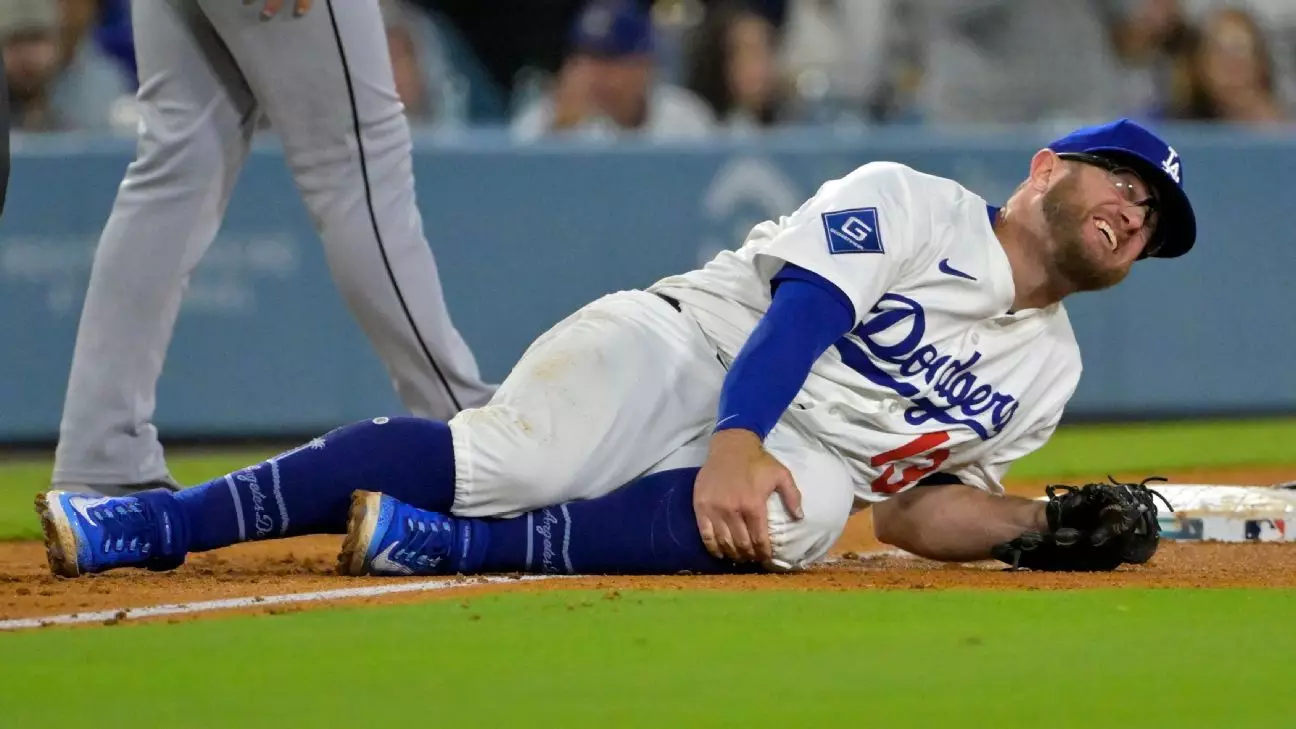In the high-stakes world of professional baseball, every game and every play carries the weight of fans’ hopes and athletes’ careers. When Max Muncy, a pivotal figure for the Los Angeles Dodgers, suffered an injury during a crucial game, it was more than just a minor setback; it was a test of resilience and mental fortitude. His injury, a bone bruise sustained during a collision, exemplifies how unpredictable the sport can be, with moments of glory sometimes interrupted by sudden adversity. The fear of torn ligaments or structural damage is a constant concern for players, and Muncy’s relief upon receiving good news from his MRI underscores the fragile line athletes walk daily.
Beyond the physical, the psychological toll of injuries is often underestimated. Muncy’s candid remarks reveal a mixture of relief and frustration—relief at avoiding serious damage and frustration over the lengthy recovery period. Six weeks may seem manageable in the grand scheme, yet for a player in peak performance, this duration can feel protracted, testing patience and mental strength. This scenario reminds fans and aspiring athletes alike that injuries are an integral, often unpredictable, part of sports, and overcoming them requires an unwavering mindset.
Clash of Confidence and Chance: The Collision That Changed the Game
The incident that led to Muncy’s injury was a seemingly routine defensive play—a stolen base attempt by Michael A. Taylor—yet it turned into a painful moment that reverberated through the game. Collisions at high velocity are inherent risks in baseball, and this one highlighted the fine margin between a clean play and a career-interrupting injury. Muncy’s collision with Taylor, resulting in a fall and the inability to fully bear weight, was a stark reminder of how a single play can alter the course of a game, not just physically but psychologically.
Furthermore, the incident created a ripple effect, affecting both teams’ strategies and morale. While Muncy left the field immobilized, Taylor also sustained a bruised back but managed to avoid more severe consequences. The shared injury created a moment of concern and empathy, emphasizing the interconnectedness of players within a game. It also spotlighted the importance of safety protocols and the unpredictability of sports—a game that is as much about chance as skill.
Balancing Relief and Forward Focus
What makes Muncy’s situation particularly compelling is his attitude of optimistic realism. His reaction—to be thankful that no severe structural damage was found—reflects a mature perspective. Athletes like him understand that setbacks are part of the journey, and how they respond can determine the trajectory of their careers. The Dodgers’ immediate response, including placing him on the injured list and adjusting their lineup, demonstrates strategic resilience, ensuring that team performance remains stable despite unforeseen hurdles.
Muncy’s comments also reveal a deeper awareness of the emotional toll these injuries take. His acknowledgment of the lengthy recovery period being “too long” hints at the internal battle between frustration and hope. Such honesty humanizes a figure often seen through the lens of statistics and highlight reel plays. It’s not merely about physical injury but about navigating the complexities of mental resilience, patience, and unwavering commitment to return stronger.
The Broader Implications and Team Dynamics
Injuries of this nature ripple beyond individual players—they directly influence team dynamics and strategic planning. The Dodgers have responded swiftly by recalling Esteury Ruiz from Triple-A, illustrating the depth of their roster and the importance of adaptability in baseball’s brutal landscape. Managers like Dave Roberts have to make split-second decisions, balancing enthusiasm for new talent with the stability of experienced players.
This incident also raises questions about how teams foster resilience among their players. It’s not enough to have talent; mental toughness, support systems, and strategic flexibility are vital to weather such storms. Muncy’s situation exemplifies the importance of a team’s collective morale and the resilience of an organization determined to overcome setbacks and continue pursuing success.
In the end, stories like Muncy’s challenge us to see sports not just as a test of physical prowess but as a testament to human resilience. His ability to remain optimistic, despite the frustration of recovery, underscores a core truth: setbacks are inevitable, but they do not define us—how we respond to them does. This narrative serves as a powerful lesson, echoing beyond the baseball diamond into the broader realm of perseverance and unwavering determination in the face of adversity.

